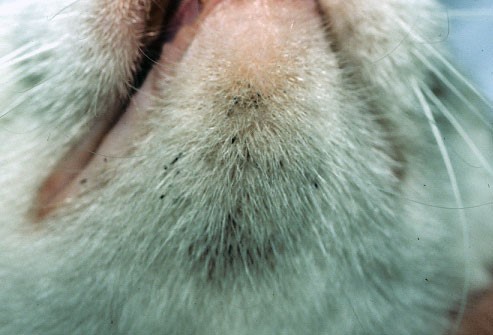
View Vetwebsites Articles
My Boerboel with its long tail really looks strange. I much prefer a Boerboel with a short tail.

Tail Docking in dogs - Why we as vets do not routinely do it anymore
To start off with let’s define what we are talking about when we are talking about tail docking in dogs.
Tail docking from a veterinary perspective refers to a surgical procedure done to puppies between the ages of 3 to 5 days old, where a portion or partial length of the tail is amputated or cut off with a scalpel or surgical scissors, bleeding is stopped by cauterisation or tying off of bleeding blood vessels with absorbable suture material, and placing a suture or sutures in the skin to close off the wound.
Is Tick Fever and Tick Bite Fever the same disease in dogs?

Erlichiosis (Tick bite fever) in dogs
It is not. Tick fever or Babesios in dogs, is not the same disease as Tick bite fever or Erlichioses. Both diseases are transmitted to dogs by ticks, but they are caused by two totally different organisms or parasites and the clinical signs, progress and treatment are very different.
My cat has pimples!

Feline Acne
Feline acne is a common skin condition in cats. Cats of any age can be affected, and there is no breed or sex predisposition.
Cats are often presented to the veterinarian with the complaint of ‘dirt on the cat’s chin, that the owner cannot remove after attempts to clean it’ or ‘bumps on the cats chin’.
Can I treat my pet's wound at home?

Wound Care at Home
When managing wounds at home it is important to always contact your veterinarian for assistance. Many home and even human wound remedies are not suitable for use in pets. Determining factors in deciding whether a wound can be treated at home or needs veterinary care includes the severity and age of the wound, the cause and location of the wound, and most importantly if the pet is leaving the wound alone. In most instances the safest and most effective way to deal with it is to take the injured pet to the veterinarian for initial treatment and advice on continued
"Crocodile Mite" skin disease in dogs and cats

Demodectic mange in dogs and cats
Demodex is a mite that lives in the hair follicles of most mammals. It is species specific which means that different types of animals, including humans, have their own type of mite. It is a normal inhabitant of the skin and is most commonly not contagious. The mite is usually passed on to puppies from their mother in the first 72 hours of life. The puppy's immune system usually copes to contain the mite but sometimes an overgrowth of the mites occurs and this is when symptoms of demodicosis also referred to as mange are seen. Mange is a collective
Ear Infections in Your Pet

Ear infection
Ear infections are common in dogs, and to a lesser degree in cats. The anatomy of the animal predisposes them to this condition. The ear canal of the dog and cat follows the shape of an “L”, going first downwards and then horisontally. This shape makes it difficult for debris and water that go into the ear to come out, against the force of gravity.
Scratch scratch scratch - Part 2 of 2

Skin conditions
In the first part of this two-part series we looked at the complexity of itching and scratching in pets and the fact that although the symptoms eventually manifest in the same way i.e. itching and scratching, there could be many different causes for it. Itching or pruritis, as vets call it, can be described as the sensation that elicits the desire to scratch. The skin, being the biggest organ in the body and acting as a sort of outer nervous system, provides feedback to the brain of things like temperature, touch, pain and itching through a network of nerve endings.
Scratch scratch scratch - Part 1 of 2

Skin conditions
Vets often hear this complaint in the examination room, where clients complain about the incessant itching and scratching of their pets. This is a more common complaint with dogs where the nightly thump, thump, thump of a hind limb hitting the floor keeps the owner and the dog awake for hours. If it is irritating and hard wearing on the owner, then equally so, if not so much more for the affected pet. Skin problems in dogs and cats make up by far the biggest number of cases seen by vets. This is understandable given the fact that the skin
The infallible flea

Fleas
Fleas are the most common pests on our pets. The immature stages (larvae, pupae) can survive for a long time in crevices, sofas, dog beds and carpets, just waiting for the right circumstances (e.g. heat, humidity) to hatch and cause mayhem. Then they not only irritate our pets but can also cause discomfort in humans. Many people will tell you that getting rid of a flea infestation in your home can be quite difficult and costly.
Tiny but deadly

Ticks
Living in a warm and sunny country is great, but with it comes all the parasites and diseases associated with a warm and/or tropical climate. One of these little scourges can be found nearly all over South Africa, namely ticks. Most people have at some or other time encountered a tick on their pet. This can be quite distressing – especially if you consider a disease like biliary (tick fever).
- 1
- 2
